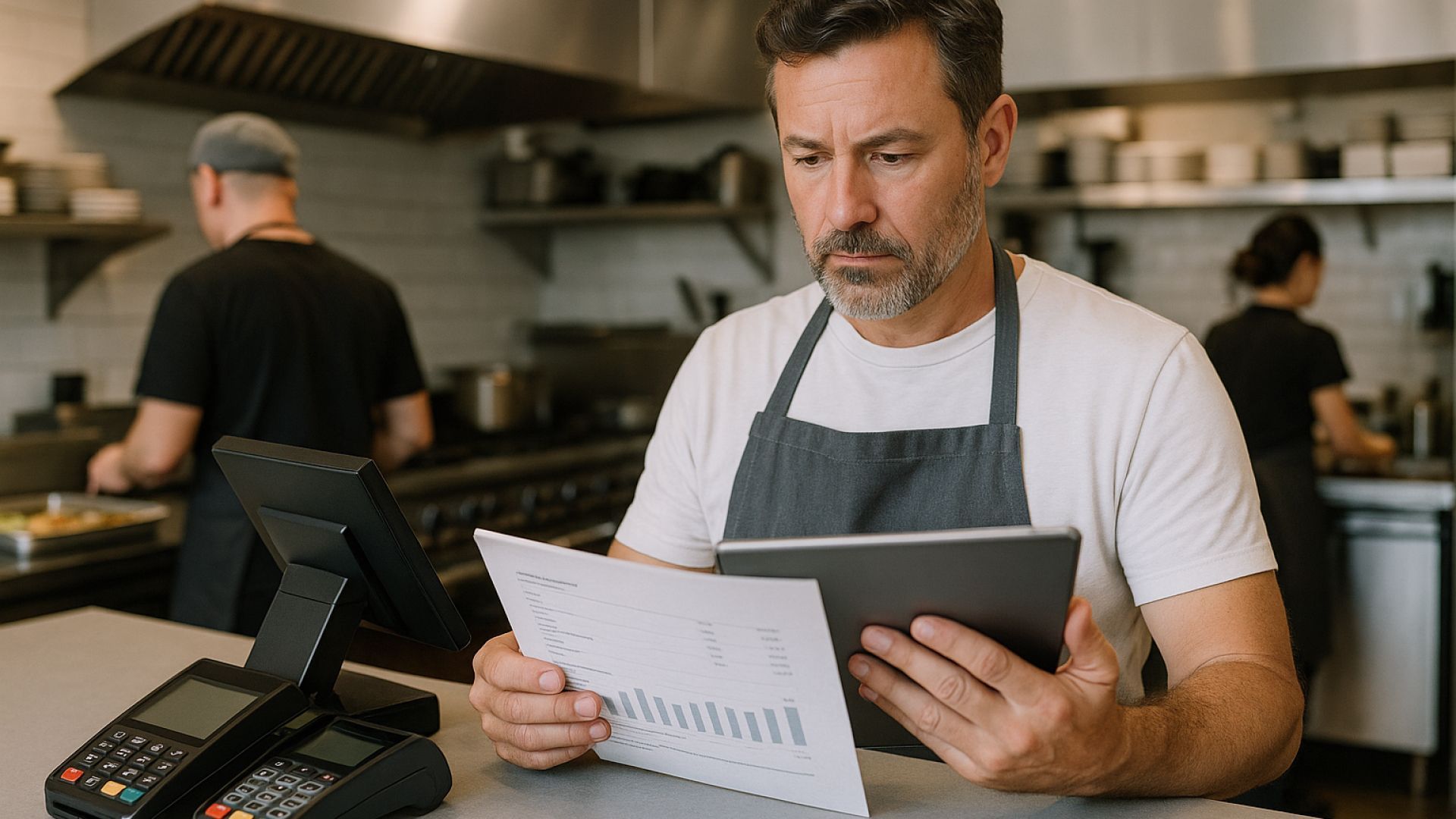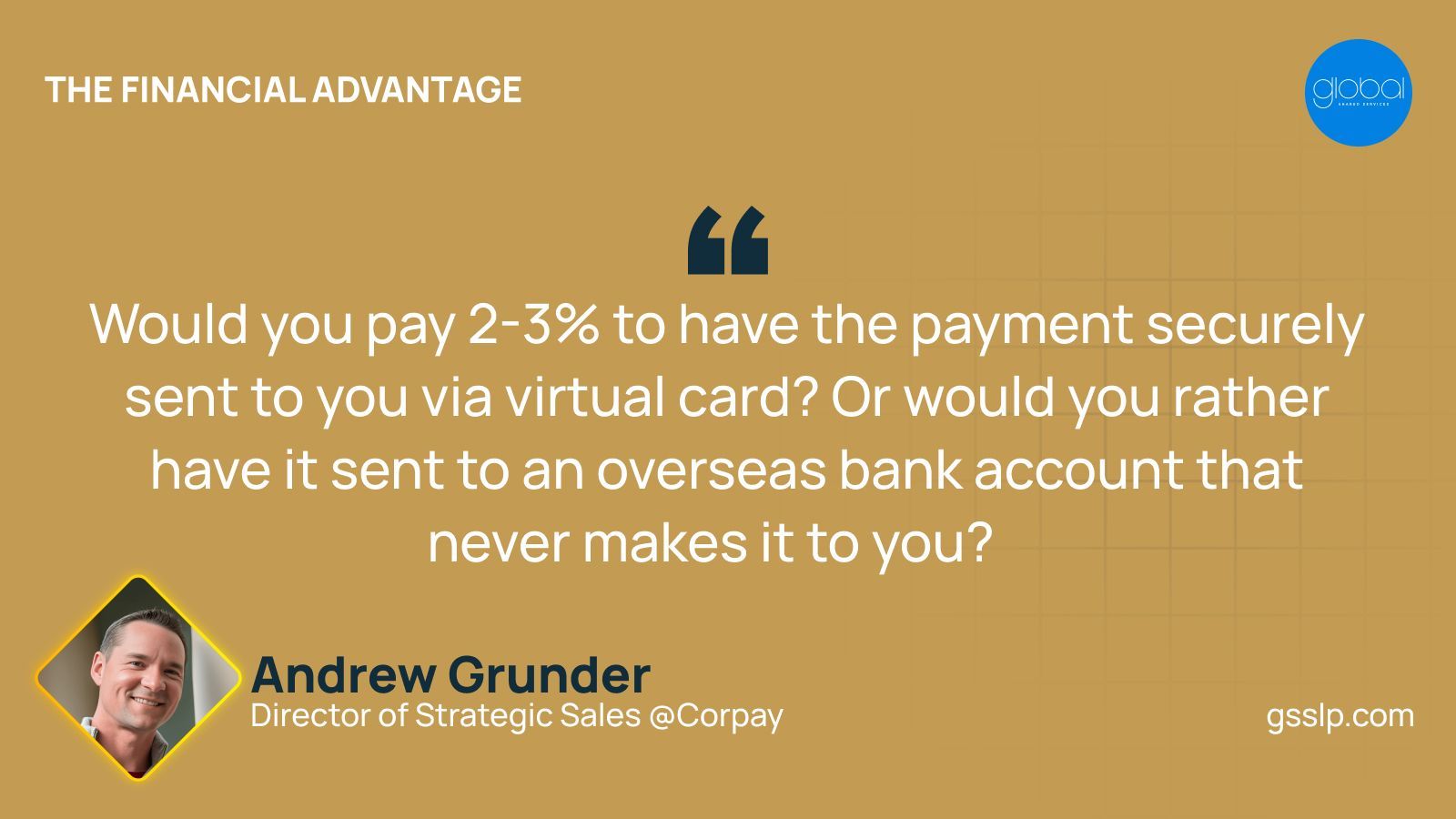Turn Payments into Profits: How Virtual Cards can Enable Restaurant Success

Managing restaurant finances often feels like navigating outdated processes. Andrew Grunder, Director of Strategic Sales at Corpay and an experienced leader in business payments and expense management, explains that many restaurants still rely on methods like checks or ACH transfers, both of which offer limited value and security.
In contrast, virtual card payments provide a modern, secure solution to vendor payments. Unlike physical cards used for travel and expenses, virtual cards are specifically designed for accounts payable. They support one-time payments tied to exact invoice amounts and offer advantages such as improved cash flow control and reduced fraud risk.
This guide will walk you through implementing virtual card payments in your restaurant, from evaluating your current system to choosing the right provider. We'll also explain the benefits at each stage, including reduced costs and improved cash flow.
Step 1: Assessing Your Needs
Virtual card payments aren't a one-size-fits-all solution. Before switching, restaurant owners should evaluate their current payment processes. Andrew pointed out that many still rely on checks—a system dating back to 1659—and ACH payments, both of which create inefficiencies and security gaps.
Start by reviewing how many vendor payments your restaurant processes each month. Are you handling dozens or even hundreds of invoices? This assessment helps estimate potential rebates, typically one to two percent of payments, and highlights operational improvements.
Consider the costs of traditional methods. Each check could cost at least $5, rising to $15 or more when factoring in manual reconciliation, inefficiencies, and costs for check stock, envelopes, mailing, and stamps.
According to Andrew, switching from traditional checks to virtual cards can significantly reduce costs. "I have customers that have eliminated thousands per week", he said. "Let's use the small number: $5 per check. If you can eliminate $5,000 a week just by shifting payments from an outdated, 1659 method of payment to a 21st-century payment method, you might say, I don't even care if you give me a rebate. I don't care if you give me any cash back on this card. You just saved me $5 per payment."
Finally, assess your exposure to fraud and your need for tighter cash flow control. Virtual cards provide one-time-use numbers and match exact invoice amounts, reducing overpayment and fraud risk. They also support improved cash management through controlled payment cycles.
Before moving forward, restaurant owners should understand these operational and financial factors to choose the right payment solution.
Step 2: Choosing the Right Virtual Card Provider
Selecting a virtual card provider isn't just a matter of payment functionality. Restaurants need a partner who understands the unique financial pressures of the industry. Not all providers can handle the scale and specificity of restaurant operations.
Corpay stands out for its focus on the restaurant and hospitality sectors. According to Andrew, Corpay's technology was built to manage high-volume transactional environments and complex accounts payable operations. "What Corpay has done, what I really like about the company where I'm at right now, is they've enabled us to, with one fell swoop in accounts payable, pay every single vendor and supplier with a virtual card," he explained.
He added that this is "not a piece of plastic, but a virtual card that helps them capture all the benefits you might think of on a traditional plastic card. This can include cash flow benefits, fraud mitigation, fraud prevention, and expense control. "
Corpay supports these benefits through four core features tailored to restaurant finance operations:
- Integration capabilities: Corpay integrates with major platforms like Restaurant365 and QuickBooks, ensuring smooth data flow and reconciliation.
- Security measures: Virtual cards from Corpay use one-time-use numbers tied to specific invoice amounts, reducing fraud risk.
- Rebate opportunities: Corpay offers cash rebates on transactions, an important consideration given thin restaurant margins.
- Customer support: Andrew noted that Corpay offers proactive assistance, manages vendor relationships, and streamlines accounts payable processes.
This combination of tailored technology, security, financial incentives, and support makes Corpay a strong option for restaurant businesses seeking to improve operational efficiency and financial outcomes.
Step 3: Implementation and Integration
Setting up virtual card payments in a restaurant doesn't have to be complicated. Andrew explained that the process typically begins with setup steps like mapping data fields into the restaurant's accounting system, including general ledger mapping. If financial statements are in good order, he noted, onboarding can take just a few weeks.
Corpay's system focuses on streamlining the process. Restaurants can opt to integrate virtual card payments while maintaining their existing check and ACH processes if desired. Andrew shared an example where a client was operational within 33 days, using virtual cards exclusively for payments while handling other payment methods in-house.
A critical part of the setup is vendor enablement. Corpay facilitates this by managing supplier relationships, ensuring payments are processed correctly, and reducing the workload on the restaurant's accounts payable team. Andrew explained that Corpay's system allows businesses to submit a complete payment file, with Corpay taking responsibility for executing payments, updating the general ledger, and ensuring accuracy.
For restaurant owners, this method simplifies the transition, keeps cash flow steady, and provides a path to improved operational efficiency.
Step 4: Maximizing Benefits and Optimizing Usage

Once a virtual card program is in place, restaurants can use several strategies to improve financial and operational performance. Andrew shared a real-world example of a McDonald's franchisee managing $4 million a month in payments.
"He was actually then taking the cash that was sitting in his bank account," Andrew explained, "putting it in a high-yield savings, some type of high-yield money market account. Collecting interest on that 30-day, in some instances it was 60 days, but 30-day float, he was collecting high yield interest and then dumping it back into his operating account and paying his bill with us."
This example highlights how virtual card payments can improve cash flow and generate additional income through float. Andrew also emphasized that virtual cards offer more secure payment methods: "You're more secure 'cause the virtual card in an accounts payable world […]you have a secure one-time use, typically exact amount that's being facilitated to the vendor and supplier."
To fully benefit from virtual cards, restaurant owners should work with their providers to identify which vendors accept virtual cards, ensure proper data mapping, and reconcile payments efficiently. Andrew highlighted that proactive management can save thousands of dollars in manual processes while reducing fraud risk.
By thoughtfully leveraging virtual cards, restaurants can improve efficiency, reduce administrative tasks, and improve cash flow without adding complexity.
Conclusion
Switching to virtual card payments offers restaurants more than just operational ease. As Andrew explained, virtual cards create opportunities to reduce costs and earn rebates. By replacing checks and ACH with secure, one-time-use virtual cards, restaurants can improve cash flow control and minimize fraud risks.
Restaurants can use these steps to streamline operations, improve financial clarity, and capture what Andrew called "free money"—cash rebates that directly impact the bottom line.
Virtual card payments are a practical choice for restaurants looking to simplify payments and strengthen financial performance. Contact GSS today to explore solutions tailored to your business, or visit our website to learn more.
Frequently Asked Questions (FAQs)
What are virtual card payments?
Virtual card payments are digital payments made through one-time-use card numbers tied to specific invoices. Unlike physical cards or traditional checks, virtual cards offer more secure and efficient processing for accounts payable.
How can virtual card payments benefit my restaurant?
Virtual cards can reduce operational costs, minimize fraud risks, and improve cash flow. Restaurants can earn cash rebates, replace outdated check payments, and streamline payment processes—all while improving financial clarity.
How do virtual card payments improve cash flow?
Virtual cards provide a "float" period—the time between when the payment is made and when it's repaid—allowing restaurants to use idle cash for other financial needs. For example, a McDonald's franchisee used this strategy to generate high-yield interest before repaying the payment.
What should I look for in a virtual card provider?
Key features include:
- Expertise in the restaurant industry.
- Integration with accounting systems like Restaurant365 and QuickBooks.
- Strong security with one-time-use card numbers.
- Cash rebate programs for payment incentives.
- Proactive customer support and vendor enablement services.
Is the transition to virtual card payments complicated?
Not necessarily. With clean financial records, restaurants can onboard in a few weeks. Providers like Corpay streamline the process by handling payment setup, vendor enablement, and integration with your accounting system.
Are virtual cards secure?
Yes. Virtual cards use unique, one-time-use numbers tied to specific invoice amounts, reducing fraud and overpayment risks. Compared to traditional checks or ACH transfers, payments are processed securely and efficiently.
Will I lose control over check and ACH payments?
No. Many restaurants set up virtual card payments for specific vendors while continuing to manage checks and ACH payments for others. Providers can tailor solutions based on your restaurant's needs.
How can virtual cards save me money?
By eliminating the costs associated with checks—printing, postage, manual reconciliation, and earning rebates, virtual cards can save restaurants thousands of dollars per week, even before factoring in float opportunities.
How do I get started with virtual card payments?
The first step is to evaluate your restaurant's current payment processes, vendor relationships, and cash flow needs. Then, contact a virtual card provider like Corpay to discuss onboarding, setup, and potential savings.
Share this post
Insights
Related Posts






